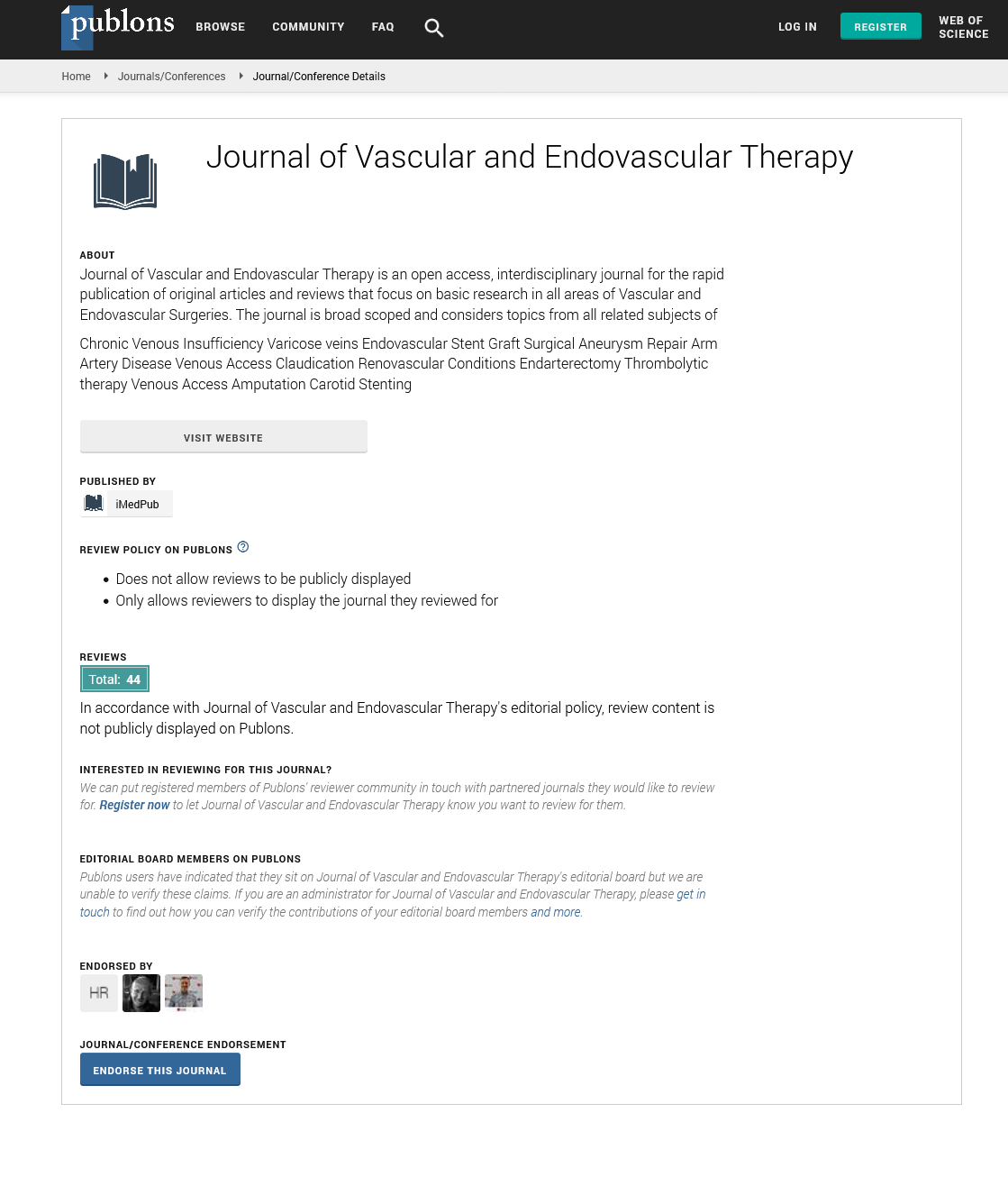ISSN : 2634-7156
Journal of Vascular and Endovascular Therapy
The efficiency of exercise training in patients with venous insufficiency
6th Edition of World Congress & Exhibition on VASCULAR SURGERY
April 28-29, 2021 Webinar
Gurdal Karakelle Saliha, Yeldan Ipek, Ozalhas Tulin, Alpagut I. Ufuk
Institute of Postgraduate Education, Istanbul University-Cerrahpasa, Turkey Faculty of Health Sciences, Istanbul University-Cerrahpasa, Turkey Istanbul Faculty of Medicine, Istanbul University, Turkey
ScientificTracks Abstracts: J Vasc Endovasc Surg
Abstract
Background: Exercise training is current treatment method for venous insufficiency. It is known that exercise training increases the ejection fraction and reduces the residual volume fraction. However, there are no studies that thoroughly investigate the effectiveness of exercise training and evaluate its effect on hemodynamic status with Duplex Doppler Ultrasonography (DDU). Objective: The aim of this study was to evaluate the effects of exercise training in addition to compression therapy on quality of life, hemodynamic status, muscle strength, clinical severity, edema, functional capacity and gait velocity in venous insufficiency compared to compression treatment alone. Method: Twenty-four patients with venous insufficiency on C3-6 level according to CEAP were randomized and divided into exercise group (EG) and control group (CG). While CG received only compression therapy, EG was applied comprehensive exercise training consisting of aerobic, strengthening and stretching exercises in addition to compression therapy for 30 min/day, 2 days/week, 6 weeks at hospital under the supervision of physiotherapist. All the patients were assessed with Chronic Venous Disease Quality Of Life Questionnaire-20 (CIVIQ-20) and Short Form-36 (SF-36), DDU, Venous Clinical Severity Score (VCSS), hand-held dynamometer, Visual Analogue Scale (VAS), circumference measurements, 6 minute-walking test (6MWT), and 10-meter-walking test (10MWT) before and after the treatment. Results: As primary outcome, CIVIQ-20 score and as secondary outcome measures SF-36, VCSS, all muscle strength, functional capacity, gait velocity were different significantly between groups in favor of EG (p<0.05). Hemodynamic status and edema improved significantly in EG (p<0.05). No side effect was observed in both groups. Conclusions: As a result of this study, it was concluded that supervised multimodal exercise training in addition to compression therapy was safe treatment that more effective on quality of life, hemodynamic status, muscle strength, clinical severity, functional capacity and gait velocity in venous insufficiency compared to compression treatment alone in venous insufficiency. Keywords — clinical severity, exercise capacity, exercise training, quality of life
Biography
Saliha Gürdal Karakelle is a young physiotherapist who specializes in cardiovascular physiotherapy. She has completed her MSc at the age of 26 years from Istanbul University-Cerrahpasa and has been studying PhD from same university. She has submitted more than 20 papers on Congress in the field of Physiotherapy and Rehabilitation, and some of this papers were published reputed journals.
Google Scholar citation report
Citations : 177
Journal of Vascular and Endovascular Therapy received 177 citations as per Google Scholar report
Journal of Vascular and Endovascular Therapy peer review process verified at publons
Abstracted/Indexed in
- Google Scholar
- Open J Gate
- Publons
- Geneva Foundation for Medical Education and Research
- Secret Search Engine Labs
Open Access Journals
- Aquaculture & Veterinary Science
- Chemistry & Chemical Sciences
- Clinical Sciences
- Engineering
- General Science
- Genetics & Molecular Biology
- Health Care & Nursing
- Immunology & Microbiology
- Materials Science
- Mathematics & Physics
- Medical Sciences
- Neurology & Psychiatry
- Oncology & Cancer Science
- Pharmaceutical Sciences
